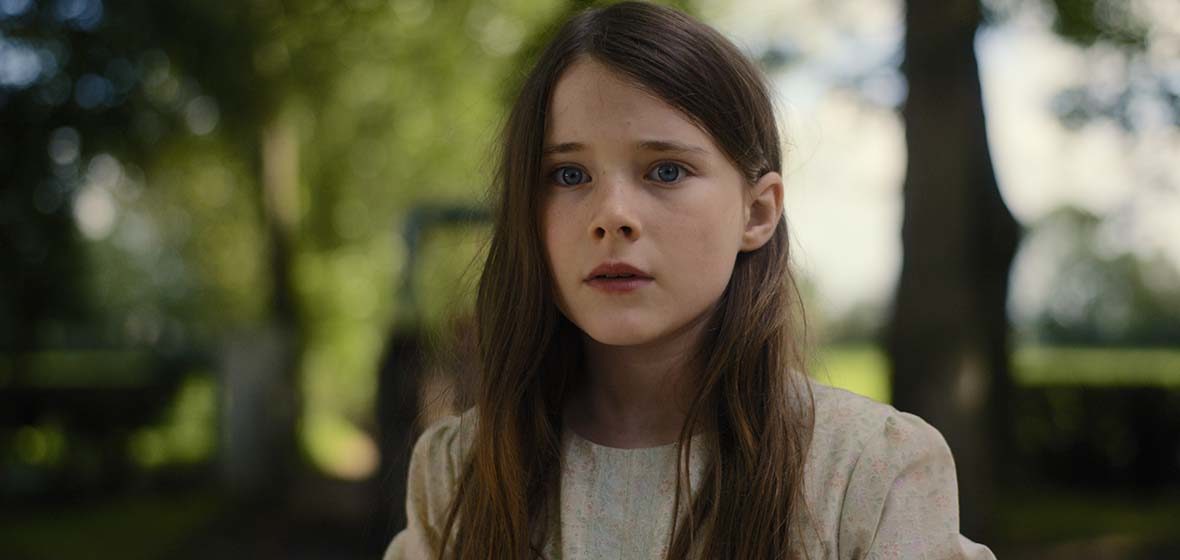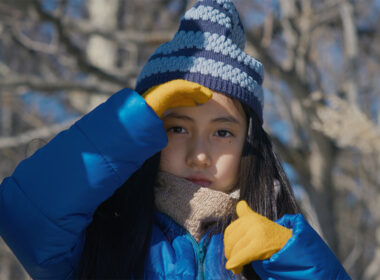4 out 5 stars
The Quiet Girl is set in 1981, but you wouldn’t know this unless you’ve been told: nothing about it has a particularly 80s feel. At least, not in terms of what pop culture perceives that decade to be. This is, I believe, intentional. In this film, Ireland, particularly the countryside, is an atemporal place still under the cultural influence of Britain instead of having the hope-filled progressive feel of the European Union.
Front and centre in this story is Cáit (Catherine Clinch), a timid young girl who struggles to fit in to her environment. Cáit’s dysfunctional family pays little to no attention to her, and she is excluded from her siblings’ adventures. At school she feels disassociated from both her peers and her teachers. Her father (Michael Patric) is an abusive, alcoholic bully, and her pregnant mother (Kate Nic Chonaonaigh) shows little compassion for her morose daughter, sending the child away to spend the summer with a cousin.
This is not a film about a child’s escapist adventure. This is not The Secret Garden or Narnia. At the beginning Cáit is reading Heidi, a book choice that signals a premonition.
Cáit’s cousin Eibhlín (Carrie Crowley) and her husband, farmer Seán (Andrew Bennett), are a loving couple with no children and an idyllic home. They don’t seem to care for Cáit’s father’s thuggish demeanour, which reassures the audience that Cáit is not joining another abusive household. No, Eibhlín and Seán offer all their attention and devotion to the little girl, even if they find her quietness at the start disheartening.
Life on the farm is a paradise for Cáit, and the only dramatic problem is how both Cáit and the audience will be able to face the thought of her removal from it. Here, instead of the chaotic, oppressive environment of her own household, where everyone speaks Gaelic except her father, we have a comforting sense of love and community.
Little by little, Cáit opens up, slowly taking the role of a loved child in a family, and just falling short of calling Eibhlín and Seán ‘mother’ and ‘father’. If this was an animated film, it would look like one of those non-fantasy Ghibli movies where daily rural life is portrayed as gentle and humane.
That’s not to say the film is a happy walk in the paddock. Concealed in its simple structure are layers of detail that function both as observations and celebrations of a resilient culture. The film is set in an area of County Waterford where Gaelic is still prevalent, and the film’s use of the language sounds almost like a natural act of defiance against the establishment responsible for English-speaking productions.
That sense of defiance permeates the film. The father, who speaks English and scoffs at the Irish folk, subjects his family to poverty and misery in a lifestyle devoid of any sense of culture and community. Eibhlín and Seán, in contrast, represent a tightly knit community where neighbours are there for each other. Folk can have secrets and grievances, but the essential sense of belonging is never destroyed.
Portraying Cáit is not as easy as standing quietly in a corner. Her movements require both subtlety and nuance, to convey the fear and trauma that live within her. When Cáit finally opens up and unwittingly exposes herself to gossip, she discovers a secret she can’t quite understand. It’s an exquisite moment that would be hard for an experienced actor, let alone a 10-year-old, to portray. But Clinch plays it so earnestly, so perfectly, that her performance becomes the beating heart of the film. This is an impressive, powerhouse portrayal, mainly because it’s consciously underplayed.
Colm Bairéad has done a great job with his first feature film. The Irish language is not used as a gimmick here, but as an element inseparable from its setting. And, instead of indulging in an overtly political message, Bairéad craftily focuses on telling a simple, heartbreaking story about human connection, adding, with a light touch, details that invite the audience to fill in the gaps. This way, the viewer can elevate the film’s message to a broader socio-political commentary — if they wish to do so.
At its softly beating core, The Quiet Girl is a gentle picture about a child discovering that a home can be a place where love prevails. The ending is a well-crafted tearjerker, but it leaves you with a sense of life-affirming warmth.




